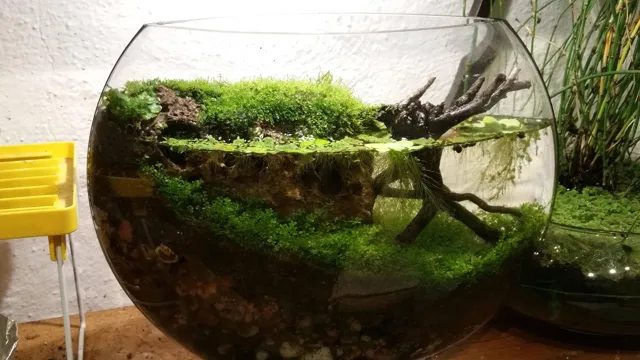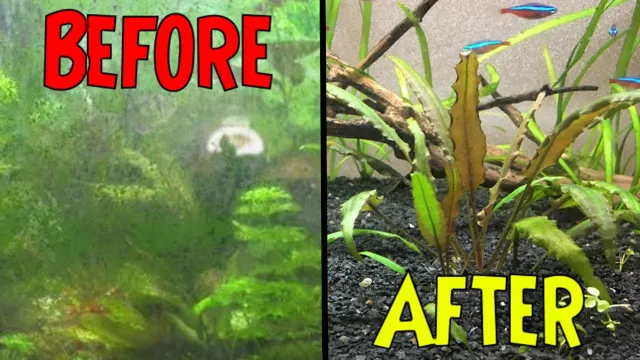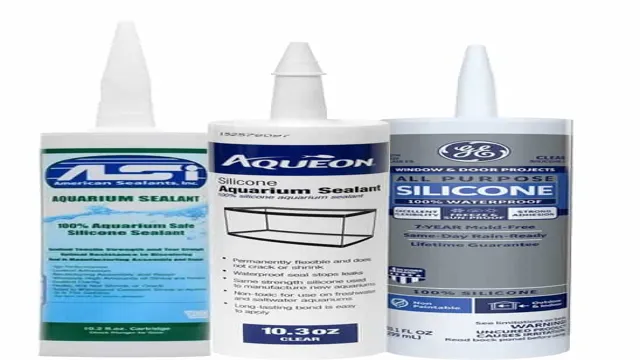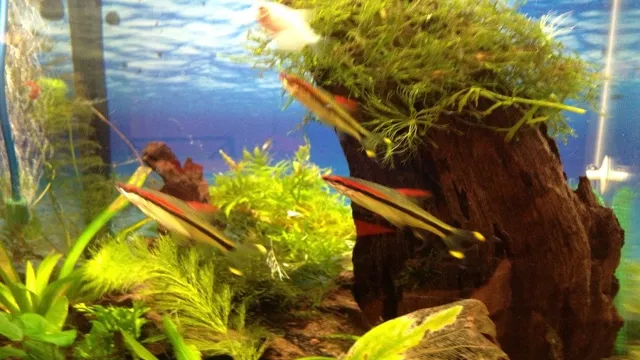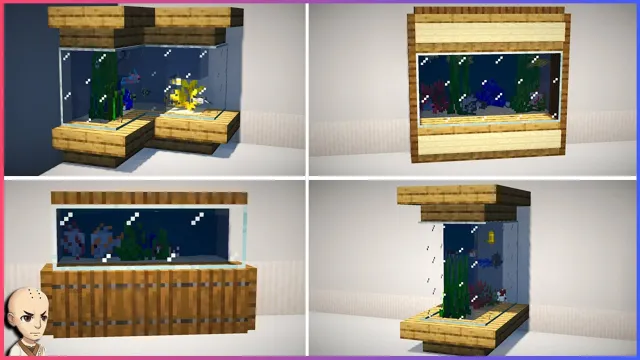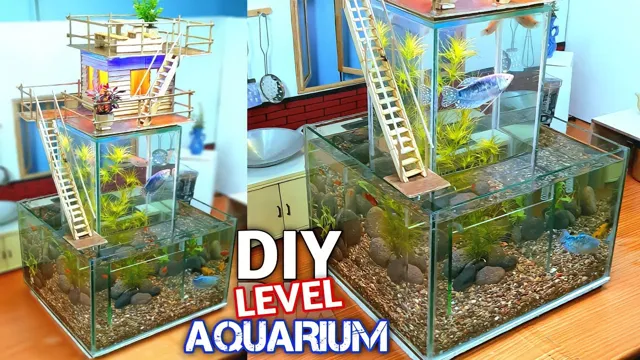Do you want to create a thriving aquarium ecosystem that sustains itself without constant maintenance? It’s possible to achieve a self-sufficient aquarium that is not only aesthetically pleasing but also beneficial to the fish and other aquatic life. A self-sufficient aquarium mimics the natural biological processes occurring in a lake or river. The key to achieving this is understanding the nitrogen cycle and how to establish a balance between the fish, plants, and bacteria in the tank.
With the right setup and care, you can create a beautiful and low-maintenance aquarium that reduces your workload while providing a healthy environment for your aquatic pets. In this blog, we’ll delve into the steps you need to take to create a self-sufficient aquarium and keep it thriving for years to come.
Choosing the Right Plants and Animals
Choosing the right combination of plants and animals is key to creating a self-sufficient aquarium. When selecting plants, it’s important to consider the lighting and nutrient needs of each species. Fast-growing plants such as hornwort and water sprite are excellent choices for absorbing excess nutrients and improving water quality.
Likewise, hardy plants like java fern and anubias are great options for low-light environments. In terms of animals, consider stocking your aquarium with algae-eating species such as snails and shrimp to keep your tank clean and healthy. Additionally, adding a school of small fish like neon tetras or guppies is a great way to add color and movement to your aquarium while also contributing to the ecosystem.
With careful selection, your aquarium can become a thriving, self-sufficient ecosystem that requires minimal maintenance.
Researching the Needs of Each Species
When it comes to creating an ecosystem, it’s important to choose the right plants and animals. And the first step in doing so is to research the needs of each species. Different animals and plants have unique requirements when it comes to water, light, nutrients, space, and shelter.
Some may thrive in dry environments, while others might need a lot of moisture. Some require shade, while others need direct sunlight. Choosing the wrong plants or animals can result in a failed ecosystem, so it’s crucial to do your homework.
One way to do this is to consult with experts or do some research online to learn about the specific needs of each species. By investing time and effort into researching the needs of your chosen plants and animals, you can create a thriving, self-sustaining ecosystem that will benefit both the environment and the creatures that inhabit it.

Ensuring Compatibility between Species
When choosing plants and animals to coexist in your ecosystem, it’s crucial to ensure that they are compatible with each other. This means taking into account their individual needs and behaviors to create a cohesive and supportive environment. For example, planting a species that requires full sun in the shade or placing predators and prey in the same space can lead to imbalances and potential harm to the ecosystem.
It’s important to do your research and select plants and animals that are known to thrive together, creating a harmonious and sustainable system. By carefully considering compatibility, you can create a thriving ecosystem that benefits all of its inhabitants.
Maintaining Proper Water Quality
Maintaining proper water quality is crucial when it comes to creating a self-sufficient aquarium. There are a few things you can do to ensure that the water in your tank stays clean and balanced. Firstly, it’s important to monitor the water temperature regularly, as even slight fluctuations can affect the wellbeing of your fish and plants.
You should also test the water regularly for levels of ammonia, nitrates, and pH levels, making adjustments as needed. Additionally, investing in a high-quality filtration system can do wonders for maintaining water quality. A good filtration system can remove debris and keep the water cycling effectively.
Finally, remember to clean your tank regularly, removing any uneaten food or waste that can contribute to poor water quality. With proper care and attention, you can create a thriving and self-sufficient aquarium that brings you years of joy and relaxation. (See Also: How to Lower Nitrates in Reef Aquarium – 7 Proven Methods for Crystal-Clear Water)
Monitoring and Adjusting Water Parameters
Maintaining proper water quality in your aquarium is crucial for the health and well-being of your fish. One way to ensure the water is safe and healthy is by monitoring and adjusting water parameters. Some of the essential elements to monitor include pH, ammonia, nitrite, and nitrate levels.
The pH level should be in the range of 5 to 5, as many fish prefer slightly acidic to neutral water.
Ammonia is toxic to fish, and its level should always be at 0 ppm. Nitrite and nitrate levels should also be measured regularly and kept at safe levels. It’s advisable to invest in a high-quality testing kit to make it easy to monitor the water parameters.
Once you identify any water parameter irregularity, such as a high pH level, you can then take corrective action, such as using an appropriate buffer to adjust the pH. By performing regular water tests and adjusting parameters as needed, you can maintain a healthy aquatic environment for your fish.
Performing Regular Water Changes
Performing regular water changes is a crucial aspect of maintaining proper water quality in your aquarium. It is recommended to change 10-20% of the water in your aquarium weekly to remove any toxins and impurities that may harm your aquatic pets. Neglecting this task can lead to the accumulation of harmful substances in the water, causing a spike in ammonia and nitrite levels and potentially leading to health problems in your fish.
It is also important to use a water conditioner to remove any chlorine or chloramines that may be present in tap water before adding it to the tank. By performing regular water changes, you can ensure that your aquarium’s ecosystem remains healthy and thrive, reducing the risk of diseases and improving the overall quality of life for your aquatic pets. So, don’t forget to set a reminder to perform this routine aquarium maintenance task regularly to keep your fish and plants happy and healthy.
Implementing Natural Filtration Methods
If you’re looking to make your aquarium self-sufficient, natural filtration methods are a great place to start. By harnessing the power of different organisms in your tank, you can create a sustainable ecosystem that supports itself. One way to do this is by adding plants to your aquarium.
Plants can absorb excess nutrients like ammonia and nitrates that can be harmful to your fish, and in return, they produce oxygen for your aquatic friends. Additionally, adding certain types of bacteria to your tank can help convert harmful toxins into less harmful substances, creating a healthier environment for your fish. With some research and experimentation, you can find the right combination of natural filtration methods for your aquarium and make it truly self-sufficient.
Incorporating Live Rock and Sand
Incorporating natural filtration methods such as live rock and sand into your marine aquarium can greatly improve the health and wellbeing of your aquatic pets. Live rock comes from the ocean and is filled with bacteria and other microorganisms that break down waste and provide essential nutrients for coral and other invertebrates. The best part is that live rock looks natural and creates a beautiful environment for your fish to thrive in.
Similarly, live sand is also filled with beneficial bacteria and is a great addition to any aquarium. Together, live rock and sand provide ample surface area for bacterial growth, which is essential for effective biological filtration. Additionally, these natural elements enhance the overall aesthetic appeal of your tank while maintaining a healthy and stable environment for your aquatic pets.
By implementing natural filtration methods like live rock and sand, you can create a thriving ecosystem that is both visually stunning and biologically healthy for your marine creatures. (See Also: How to Do Water Changes in Freshwater Aquarium: A Step-by-Step Guide)
Using Bio-Balls and Other Biological Media
Bio-Balls and other types of biological media are great natural filtration methods that you can use to keep your aquarium water clean and healthy. These media are typically made up of several small plastic balls that have a porous texture. The porous texture of the bio-balls enhances the growth of beneficial bacteria, which help to break down harmful toxins in your aquarium quickly.
This filtration process helps to promote a healthy and stable environment for your fish, plants and other aquatic creatures residing in the tank. Using bio-balls is very straightforward; you just need to place them inside your filter’s chambers, and they’ll start working their magic. Other types of biological media that you can use include sponge filters, ceramic noodles, bio-rings and more.
It’s worth noting that using biological media requires patience, as it can take several weeks for the beneficial bacteria to colonize and start to function effectively. Nevertheless, it’s a worthwhile investment, and your fish will thank you for it!
Providing Adequate Lighting
One of the most important factors in creating a self-sufficient aquarium is providing adequate lighting. Proper lighting not only enhances the aesthetic value of the aquarium but is also crucial for the growth of plants and the overall health of aquatic animals. When it comes to lighting, it’s important to consider the type of aquarium you have and the types of organisms you plan to keep.
For instance, a reef tank will require significantly more lighting than a tank with simple plants and fish. LED lighting is an efficient and popular choice for aquariums, as it provides strong light output while using less energy. However, if you have live plants, you will need to ensure that your lighting spectrum includes both blue and red wavelengths to promote photosynthesis.
It’s also important to regulate the amount of light your aquarium receives to prevent algae growth and ensure that your fish and other aquatic organisms have a natural day/night cycle. By providing proper lighting, you can help ensure a healthy and thriving aquarium system that requires minimal maintenance.
Selecting the Right Type of Lighting
When it comes to selecting the right type of lighting, it’s important to consider how much light is needed to adequately illuminate a room. That means considering the size of the room and how the space is used. Bedrooms, for example, need softer, more ambient lighting, while kitchens and workspaces require brighter, more focused lighting.
When selecting lighting for a particular room, the main keyword to bear in mind is “adequate lighting”. The goal is to provide enough light to comfortably carry out tasks without creating glare or harsh shadows. By selecting the right type of lighting, you can make a room feel more comfortable, more inviting, and more functional.
So whether you’re updating your home or outfitting a new workspace, be sure to consider the importance of adequate lighting in every room.
Establishing a Lighting Schedule
Establishing a lighting schedule is important for providing adequate lighting in any space. Whether it be a home, office, or outdoor area, proper lighting is essential for safety and productivity. It’s crucial to consider the purpose of the space when establishing a lighting schedule.
For example, a workspace should have brighter white light to promote alertness and reduce eye strain, while a bedroom should have warmer, softer light to promote relaxation and restful sleep. Additionally, using a lighting schedule can save energy and money by only using the necessary lights at certain times. Overall, taking the time to establish a proper lighting schedule can greatly improve the functionality and atmosphere of any space.
Conclusion
And there you have it, folks! Your very own self-sufficient aquarium, completely independent and thriving without any outside interference. With the right combination of plants, animals, and sustainable practices, you can create a miniature ecosystem that is truly a marvel to behold. So go forth, experiment, and see what amazing things you can accomplish in your own little watery world. (See Also: How to Grow Aquarium Plants in Indiana: Tips and Tricks for a Thriving Underwater Garden)
Who knows, maybe you’ll even be able to teach your fish a thing or two about sustainability!”
FAQs
What is a self-sufficient aquarium?
A self-sufficient aquarium is a closed ecosystem where plants, animals, and microorganisms work together to maintain a healthy and sustainable environment.
How can I make my aquarium self-sustainable?
You can make your aquarium self-sustainable by introducing live plants, a proper filtration system, and a balanced food chain with algae, snails, shrimp, and fish.
What kind of plants should I add to my self-sufficient aquarium?
You should add plants that perform different functions such as oxygenation, nutrient absorption, and waste reduction, for example, hornwort, anubias, java fern, and marimo moss balls.
What type of filtration system is best for a self-sufficient aquarium?
The best filtration system for a self-sufficient aquarium is a combination of mechanical, biological, and chemical filtration that supports the growth of beneficial bacteria and maintains water quality.
Can I add fish to a self-sufficient aquarium?
Yes, you can add fish to a self-sufficient aquarium as long as you choose species that are compatible with the ecosystem and do not overpopulate or produce excessive waste.
How do I maintain a self-sufficient aquarium?
You can maintain a self-sufficient aquarium by monitoring water parameters, adjusting lighting and feeding schedules, pruning plants, and performing partial water changes and filter maintenance as needed.
What are the benefits of a self-sufficient aquarium?
The benefits of a self-sufficient aquarium include a reduced need for water changes and chemical treatments, a lower risk of diseases and algae outbreaks, and a more natural and beautiful display of aquatic life.

